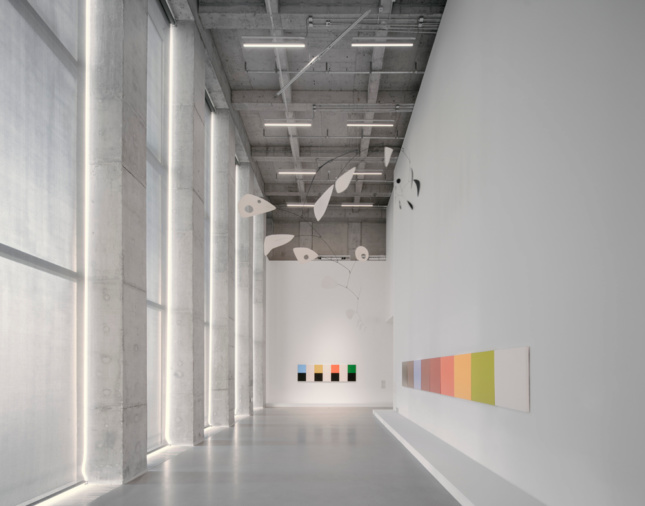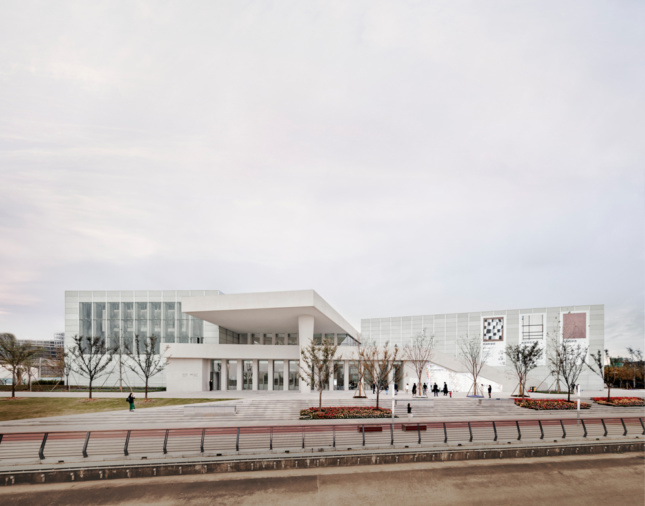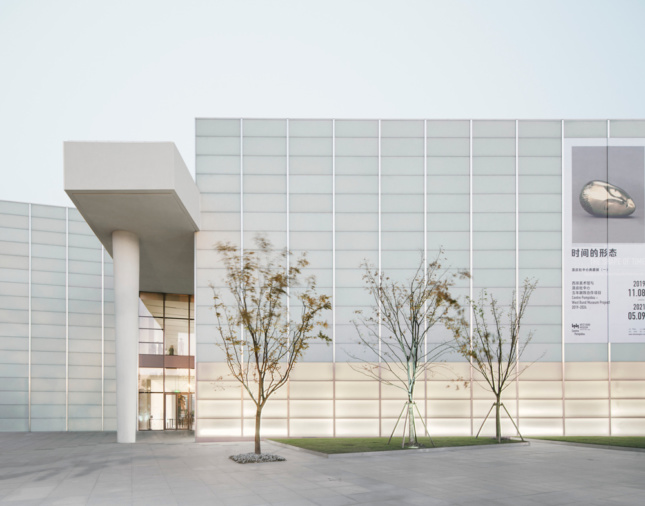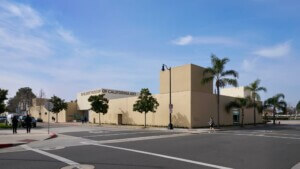With the multi-billion dollar Chinese art market now ranked as the third-largest internationally, and with the growing interest in exhibiting Chinese artists in the West, the opening of the Centre Pompidou’s new Shanghai partnership is no surprise. The Centre Pompidou x West Bund Museum Project is the keystone of the urban revitalization plan to turn an industrial strip on the Huangpu River into a cultural hub. The West Bund Museum, designed by David Chipperfield Architects, opened to the public on November 8 and was inaugurated earlier last week with a visit by French President Emmanuel Macron.
The museum will house 27,000 square feet of exhibition space, a cafe, bookstore, art studio, and educational spaces. Sitting on a brand new riverside park, the West Bund Museum invites the public in through its towering double-story lobby. “The public facilities all contribute to the idea that modern museums are more than just a destination for viewing art,” said Libin Chen, a partner at David Chipperfield Architects’ Shanghai office.

“When we designed the building it wasn’t for the Centre Pompidou,” said David Chipperfield in an interview with The Art Newspaper. It was for ‘a museum.’ When we asked, ‘what will be in the museum?’, the answer was: “We don’t know yet. But we need three big multi-functional halls that can be used for anything—exhibitions, performances, parties. It was incredibly generic, which was a bit frustrating. We were playing tennis with ourselves—there was no one hitting the ball back. Architects always argue that they would like more freedom, but be careful, because sometimes freedom doesn’t help you.”
The glass-clad building, while bearing no formal similarities to its parent museum in Paris, is intended to reflect a similar concern for openness and transparency. “In this case, the pedestrian route along the river is a surprisingly important infrastructural element, busy with joggers and walkers. That is something to respond to. So the building doesn’t have a back and a front,” said Chipperfield. The ground floor houses a river-facing cafe and bookstore that is open to the public.

This form of cultural exchange has already been well-established by other global museum expansions, such as the Louvre in Abu Dhabi. The Pompidou itself has also already crossed France’s border with the opening of the Centre Pompidou Málaga in 2015. The Shanghai partnership, which has a five-year timeline with the possibility for renewal afterward, has been self-described as “the highest-standard cultural exchange project of such long duration between China and France in the cultural field.”
The West Bund Museum’s transparent design concept, however, doesn’t necessarily extend to the curation process. Though the parent French institution curates and provides artwork for its Shanghai outpost, it is still subject to Chinese censorship laws. According to the New York Times, less than five pieces of artwork were blocked from the exhibition by Chinese officials for “not only political” reasons.















